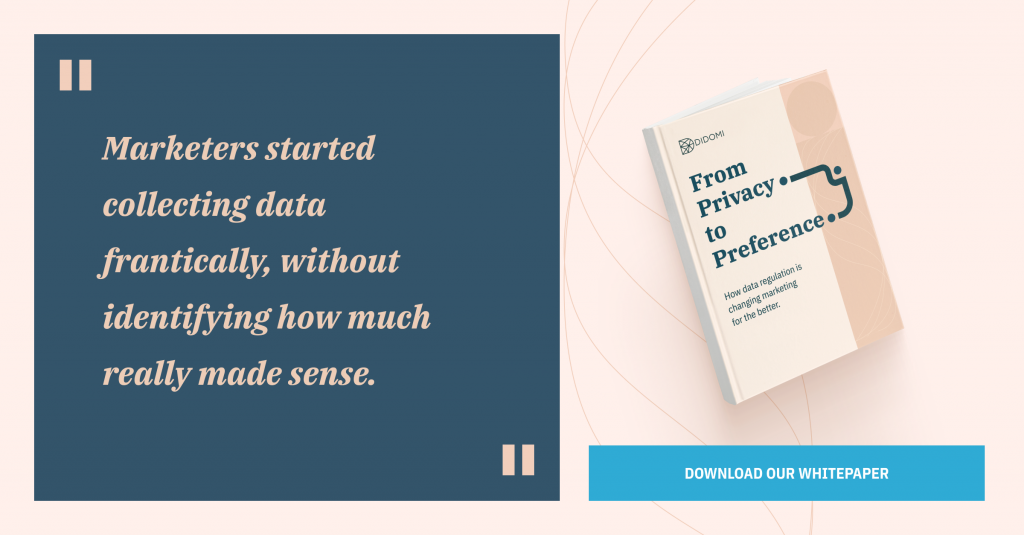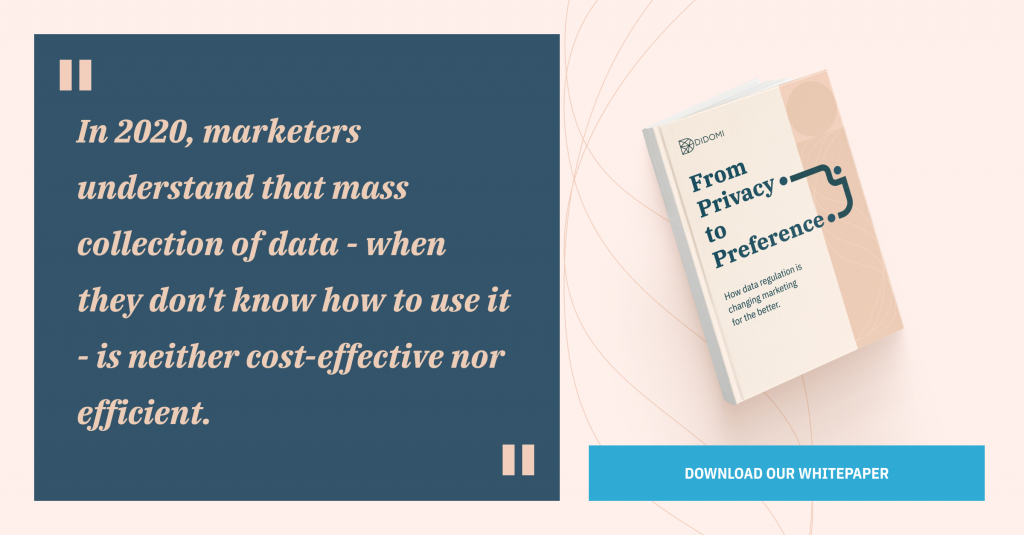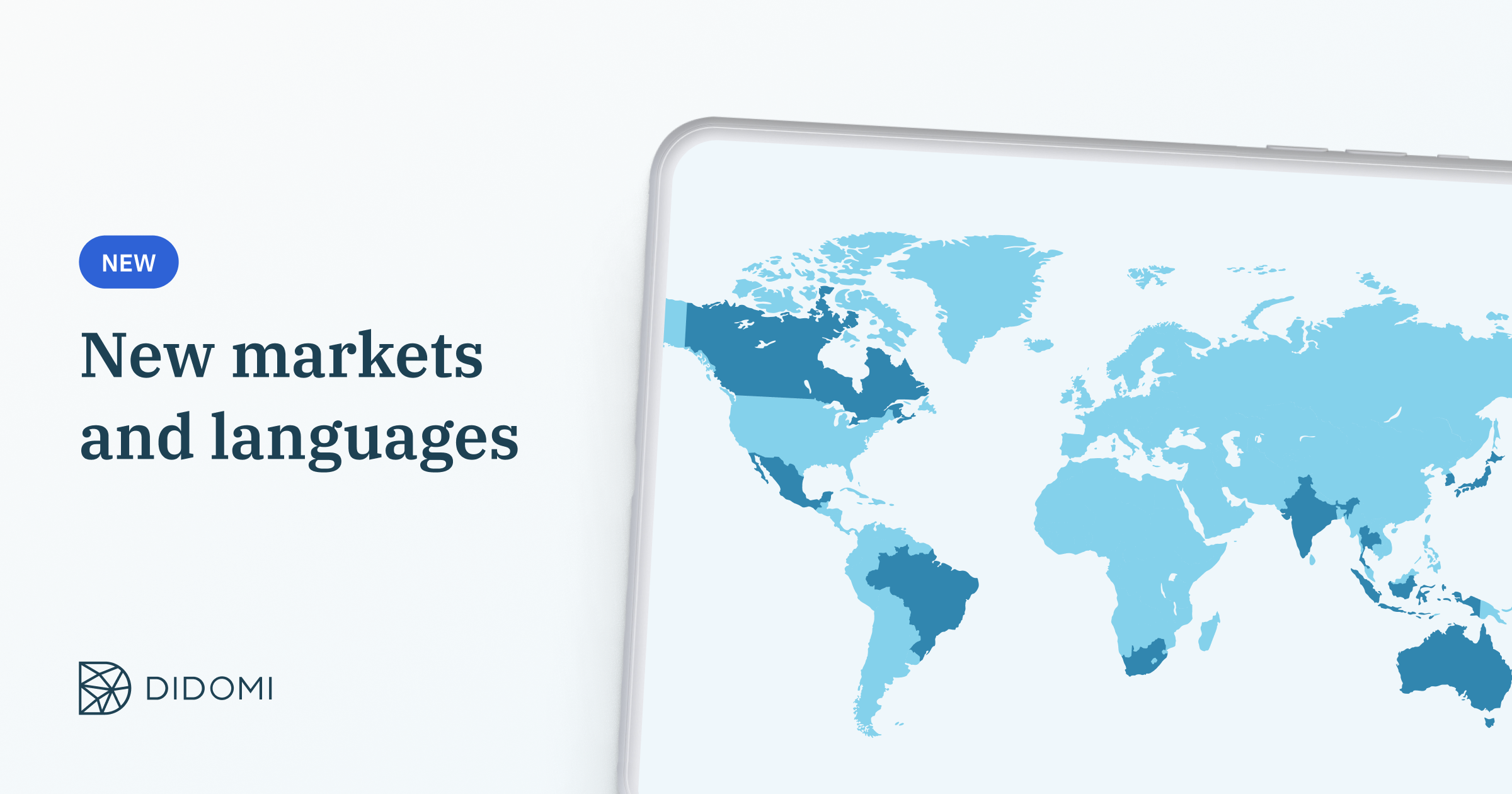Do you remember how marketing looked before 2010? Marketing studies, the holy 4 P’s— product, price, place, promotion, the marketing mix… Data-driven marketing was barely taught in business schools. Things have changed — and they have changed a lot. Data-driven, Big Data, data analytics are now part of our vocabulary, and the traditional marketing mix approach looked a little old-fashioned. “Data-driven” marketing has been trending for some years now, upon one promise: providing insights on customers actual needs and behaviours, and bringing measurable improvements in acquisition, retention, revenue. All of this with virtually no investment.
Summary
This vision has changed the way we shape our customer experience. Data-driven marketing is based on the collection and analysis of all the data generated during the customer's journey, from the moment they discover the brand to the act of purchase. So we have built our customer experience so as to gather as much data as we could.
The good news: our CRM and marketing automation software is now heaving with a massive amount of data — navigation data, forms, analytics, and much more. The bad news: most of us do not succeed in making sense of this massive amount of data, nor in building meaningful strategies upon it. This is what we call data overload.
What is data overload?
In their frantic data collection, companies have underestimated two costs: the time it takes to make sense of the data collected, and the necessary skills to turn the data pool into useful. It takes time and skill to assess the quality of your data, and to clean it. Is your data reliable? Up to date? Useful in your context? The more data you collect, the more complex it gets to positively answer these questions.
Collecting data first, thinking strategically afterwards: this results in overflowing CRM software with any data you can collect, focusing on completion rate, opening rate, click rate, and forgetting the one true goal of marketing: understanding our customers, and covering their needs profitably. Regulations are also becoming more stringent— think of GDPR — and customers are also more data-savvy, and less inclined to provide their personal data for free.
Conclusion: data is more difficult to collect, carries a greater legal risk, and having too much of it does not help the business.
How to solve data overload in 6 simple steps
Data overload is not a minor issue: It consumes time, skills, and money. The data collection process itself degrades your customer experience: customers are sick of filling in forms, receiving emails, and giving unnecessary access to their private data.
We have highlighted a few principles for you to get started:
- Privilege quality over quantity
- Ask for data when it makes sense to your customer
- Put up a strategy before starting to collect
Solving your data overload issue and getting to a more customer-centric, privacy-respecting way of doing marketing is not a simple task, but it will benefit your organisation as a whole. Here are 6 simple steps you can follow to
1. Mapping personal data
Start with mapping the personal data you collect: where is it collected? What is the context? Where is it stored? Who gets to access and use it, and what for?
2. Understanding the purpose behind data collection
Then, get into the discussion with the team in charge. For every data collection operation, you should discuss the following with the team in charge:
- What is the goal of collecting this set of data?
- What KPIs can be used/do you use to measure whether the goal is being met?
- How does this goal integrate into the big picture for your team?
- What beneficial impact does it have in the long term on the customer relationship?
3. Shifting to a customer-centric perspective
Congratulations, you’ve just gathered company-centric insights!
This is a first step, but this is not enough. It’s now time to turn things around and put yourself in the shoes of your potential customer. Remind your colleagues that this data collection is one of the many touchpoints between the brand and the prospect and go on with the following:
- What do they expect from this interaction and at which step of the customer journey does it happen?
- What value do they provide to their prospects/customers in exchange for their data?
- Will the data collected directly contribute to increasing the value of what they offer?
- How are customers likely to perceive it?
For instance, asking for your customer location will not be perceived the same if you ask during checkout in order to locate the nearest relay point, or out of nowhere when entering the website. The request for access to personal data is an integral part of the user experience, and having designers onboard can shed interesting light on the consistency between what the team wants to offer, and the perceived value.
4. Aligning marketing objectives and user experience
At this point, you have certainly identified discrepancies between your marketing goals and the quality of your user experience. At this step, you will try to align both of them.
Think of it this way. You certainly want to better segment your prospects, but what is the ultimate goal? Do you want to address them with the offer that best suits them? To better understand the buying journey on your e-commerce site? Your customers share these objectives ; just from a different perspective. They want to get the most relevant offer at the best price, and to benefit from an optimised buying path enriched by their personal data when relevant.
Translating the department's objectives into elements of value for your customers will allow you to design a data collection process that makes sense to everyone. No more garbage data from forms filled out with a disposable email address by a prospect who only wants to assess the quality of your content without being harassed by emails about company news they don’t know anything about yet.
5. Setting up a data collection workflow
In most cases, you will need to get consent from your visitors to collect their personal data: we have written several blogs about your marketing obligations regarding GDPR. Consent collection is part of the implementation, and will give you valuable information about how your prospects perceive your data collection strategy. The collection workflow should be adapted to the specificity of the target audience (platforms used, relationship with the brand, sensitivity to collection issues, interest for a customised experience...) and must be able to evolve rapidly according to feedback.
The adaptability of the data collection workflow is a key element: collecting geolocation data might be easier on your app, while you will get a higher completion rate on your website form. Your workflows must adapt to real-world feedback and evolve with your strategy until the right balance is found between the data collection needs and the customers' perception of the value of this collection. A/B testing methods will help a lot in testing various configurations and measuring results.
On the other hand, your data collection workflow must be tool-agnostic, and designed in such a way that it can keep up with tool changes and is not dependent on a specific technical stack. Changing CRM provider, or starting a marketing automation program must not break the workflow. Freed from the technical constraint, you can make choices that make sense marketing-wise.
6. Measuring results and integrating consent into the metrics
Integrating the user experience and marketing goals sets a new metric to follow: consent behaviour. Consent rate at a step of the journey is a great indicator of your customers' preferences and allows you to better understand their appetite for a specific type of content, for a specific communication channel, and to implement a positive reinforcement strategy across the touchpoints of the customer journey. IT teams need to be an integral part of the process to make this information translatable from one database to another, and to ensure that a given or withdrawn consent is passed on throughout the system.
Collect fewer, but better
Marketing in 2010 was data-driven, and the amount of data collected was the main KPI. Marketers in 2020 understand that mass collection is not always cost-effective, while focusing on the customer is beneficial to the brand. 2020 is likely to be the decade when marketers will focus on collecting less, but better.
How to get started? Didomi is here to help. We describe the full approach in our whitepaper.
Contact us to discuss these topics and see how we can help you strive for an effective, profitable, customer-centric approach.












